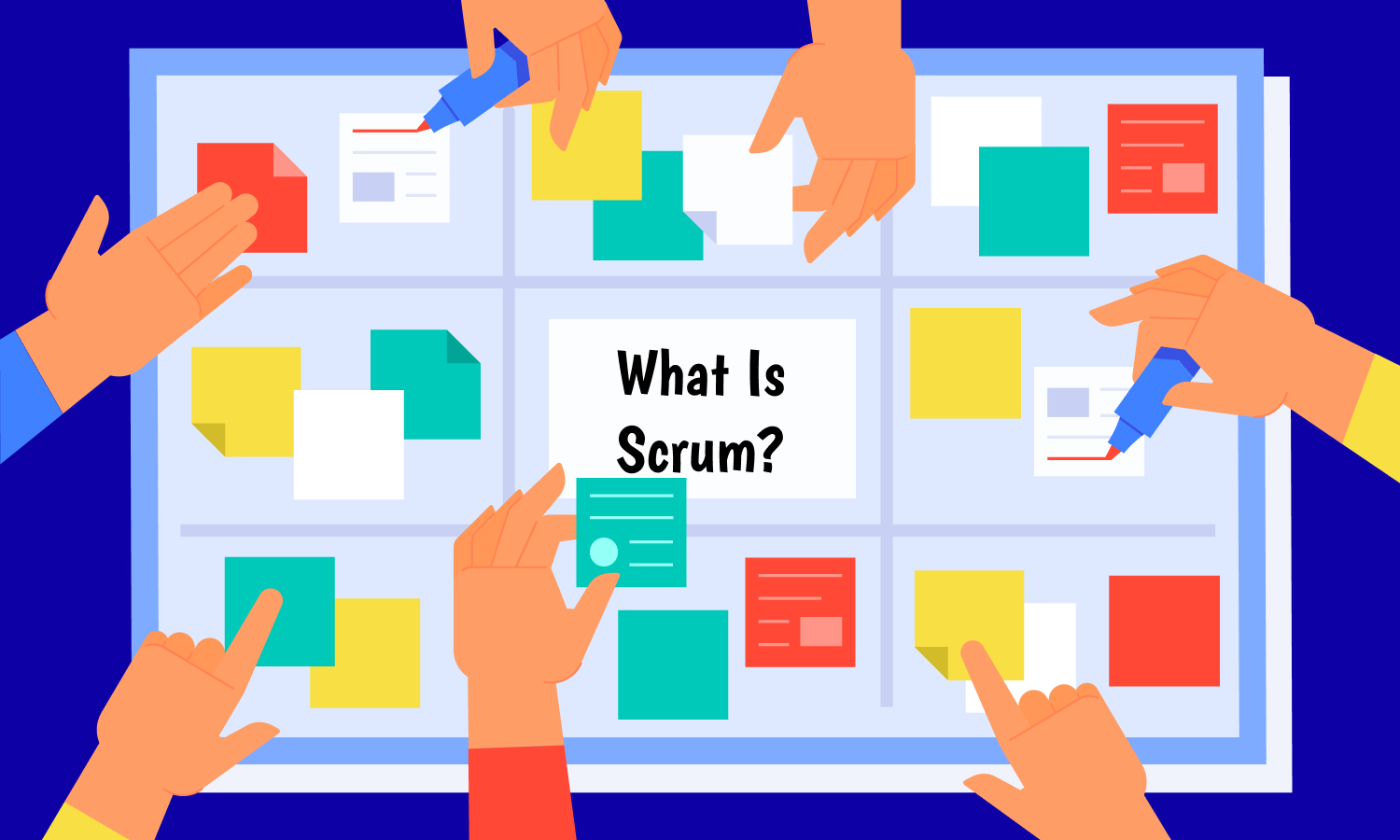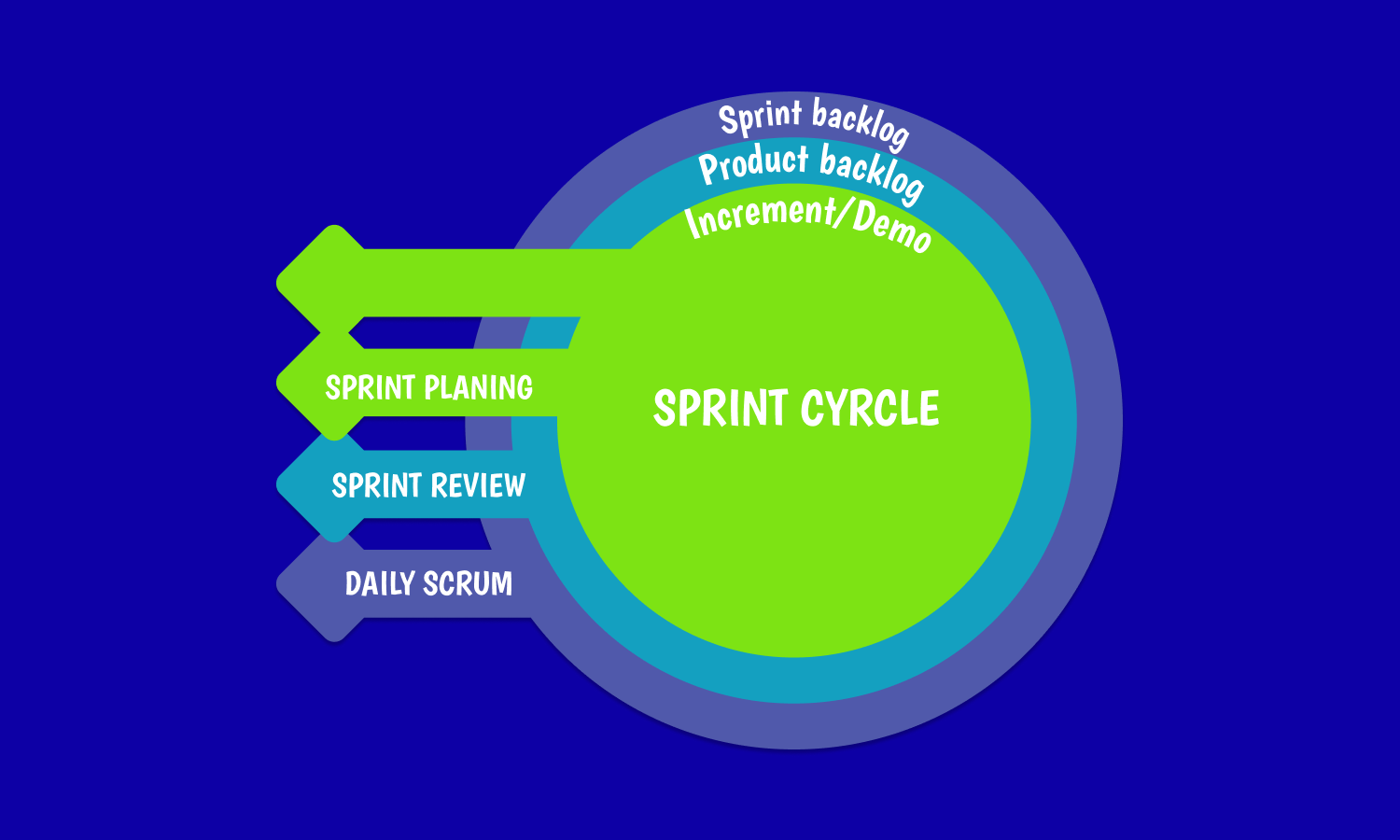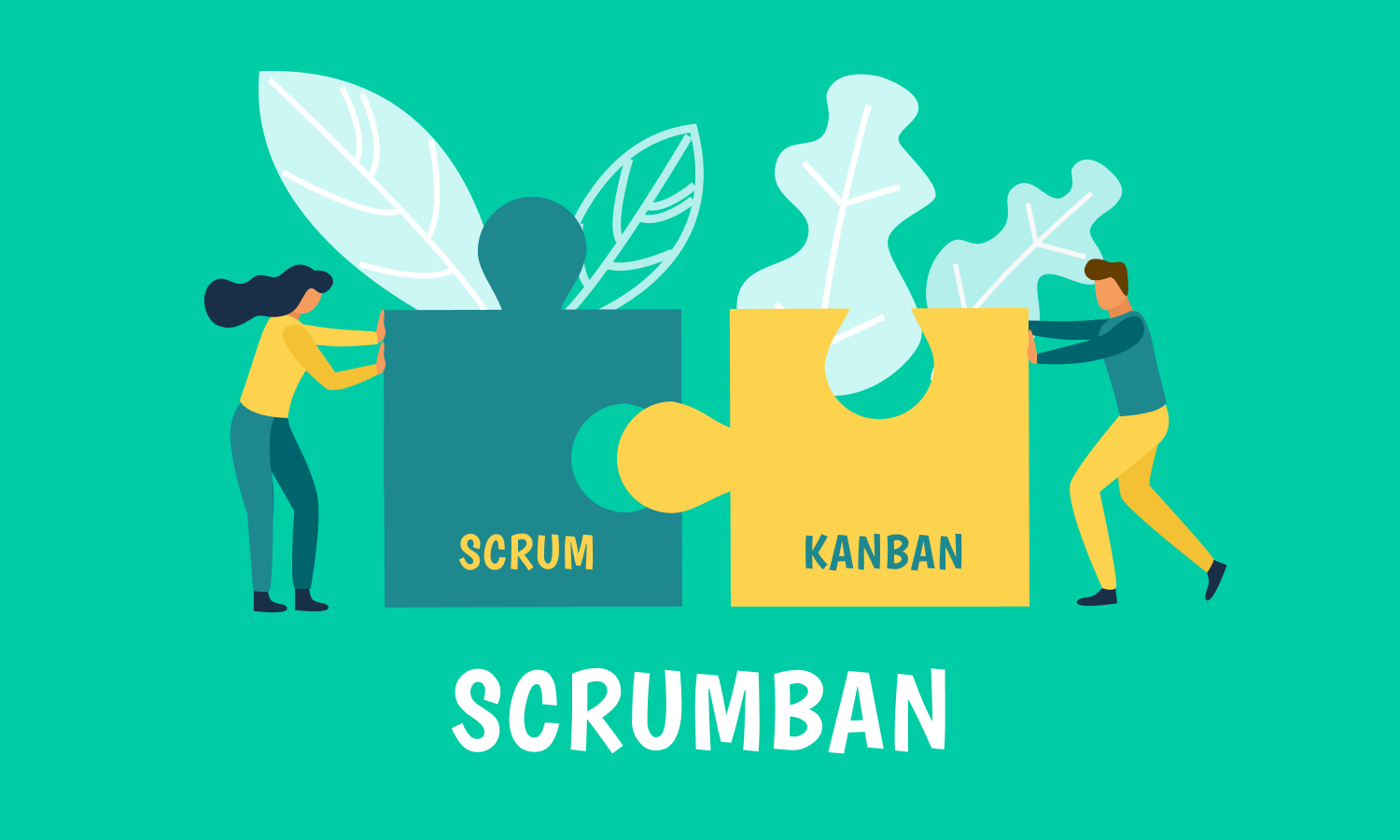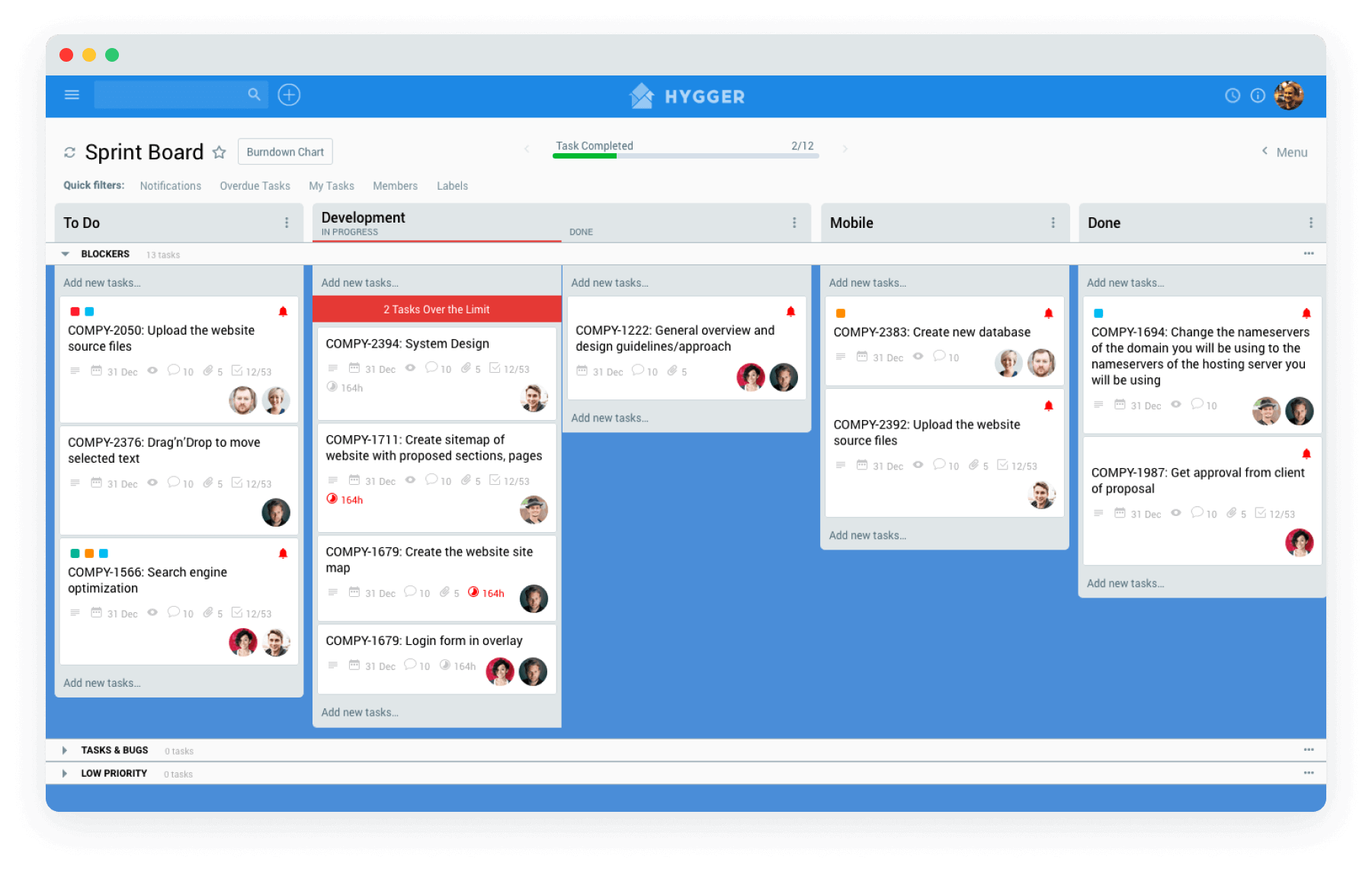Scrum
A great project management methodology for complex projects with high uncertainty levels.
Browse topics
Scrum
If you are a newcomer in the world of Agile project management, the number of unclear terms can feel daunting.
 Project and product teams fulfill many roles and responsibilities as a part of their day-to-day functions, therefore, they need to be sure to understand all terminology and processes. Choosing the right project management methodology that will guide your efforts and usher your project through to completion is one of the most crucial steps.
Project and product teams fulfill many roles and responsibilities as a part of their day-to-day functions, therefore, they need to be sure to understand all terminology and processes. Choosing the right project management methodology that will guide your efforts and usher your project through to completion is one of the most crucial steps.
There are many methodologies to choose from, and each is best suited to particular types of teams. One of the most common and reliable approaches to project management is Scrum.
Read on below
Scrum Articles
Sprints
Timeboxed iterations of a continuous development cycle.
Read this Article
Scrum Ceremonies
Scrum ceremonies help the team maintain a seamless cycle of successful sprints.
Read this Article
Product Backlog
Product backlog in Scrum: what we should know about it.
Read this Article
Backlog Grooming
What makes backlog grooming an important Scrum practice?
Read this Article
Sprint Reviews
Everything you need to know about Sprint Reviews in Scrum.
Read this Article
Daily Stand Up
A complete guide to impressive daily Stand Up meetings
Read this Article
Scrum Master
All about Scrum Masters and their career growth opportunities
Read this Article
Retrospective Meeting
What is the Agile Retrospective meeting in Scrum and how to make it effective?
Read this Article
Distributed Scrum Team
What is a distributed Scrum team and how to lead it to success?
Read this Article
Scrum Roles
What are the main Scrum roles and their professional responsibilities?
Read this Article
Scrum of Scrums
How to work together with several Scrum teams.
Read this Article
Scrum Artifacts
Exploring the role and power of the key Scrum artifacts
Read this Article
Scrumban
The combination of Scrum and Kanban that contains the best rules and practices of both methods.
Read this Article
[Continued]
Scrum, one of the Agile frameworks, helps teams to quickly respond to changes. By staying focused on the priority things and communicating, they can accomplish more together.

Scrum is everywhere
Do not think that Scrum applies only to the IT sector. Universities use it to deliver valuable projects to students. Militaries rely on the Scrum framework to prepare ships for deployment. The automotive world builds fast and affordable commuter cars also with Scrum. Examples are numerous.
So, why is this Agile framework so popular today?
In this article, we will consider what Scrum is, as well as its advantages for project management, its main principles, rules and values, roles, and artifacts. Also, you will learn the main differences in the not always clear Scrum vs. Kanban vs. Agile confrontation.
Are you ready to figure it out? Then let’s get started!
What is Scrum?
If you are looking for a simple and clear Scrum definition, you may set eyes on the following interpretation:
“Scrum is a process framework used all over the world to manage product development and other knowledge areas. The methodology provides teams with a means to generate a hypothesis of how they think something works, check it, analyze the outcomes, and make adjustments if needed.”
The structure of Scrum allows teams to include practices from other frameworks where they make sense for the team’s context.
Do you remember the concept of a rugby game? Much like a rugby team (where the method got its name), Scrum motivates groups of people to learn through experience, be self-organized, and reflect on their wins and losses to continuously improve.
Though Scrum is most frequently used by software development teams, its core practices and principles can be applied to all kinds of teamwork. The method describes a set of roles, special meetings, and tools that work in concert to help Agile teams structure and manage their work in a proper way.
What is the main contribution of Scrum?
Scrum is a simple, but efficient way to manage the work of a small collaborative team involved in product development. Its set of clear rules allows the team to effectively plan activities, control the work, and identify risks.
A quick tour of the Scrum origins
The milestones in the history of the Scrum method are:
- In 1986, Harvard Business Review published ”The New Product Development Game” by the authors Takeuchi and Nonaka. The article described an approach from rugby sport where “the product development process emerges from the constant interaction of a hand-picked, multidisciplinary team whose members work together from start to finish.” This article is often named as the inspiration for Scrum.
- In 1993, Jeff Sutherland invented Scrum as a process at Easel Corporation.
- In 1995, Ken Schwaber and Jeff Sutherland presented the Scrum methodology at the OOPSLA Conference.
Scrum vs Kanban vs Agile
Scrum and Agile: Particular qualities of the framework
Scrum and Agile are often perceived by people as the same thing because Scrum is centered around continuous improvement (which is the core principle of the Agile methodology). However, Scrum is a framework that helps you get the work done, while Agile is a mindset. You can effectively use Scrum to help your team “go agile” and introduce Agile principles into your work and everyday communication.
The key difference between Agile and Scrum is that while Agile is a project management philosophy that uses a core set of values or principles, Scrum is a specific Agile methodology that is used to facilitate a project.
Scrum is heuristic by nature. The framework is based on continuous learning and adjustment to fluctuating factors. It admits that the team may not know everything at the start of a project, but it will evolve through experience. It helps teams to adapt to changing conditions, user requirements, reprioritization, and short release cycles. All this lets the team constantly learn and improve.
Scrum and Kanban: So similar, but so different
Kanban is a popular and reliable alternative to Scrum. Some companies even choose a hybrid model of Scrum and Kanban, which is named “Scrumban” or “Kanplan.” The latter is actually Kanban with a backlog.
Both Scrum and Kanban use such a method of visualization as a task board aimed to track the progress of work. Both approaches focus on efficiency and splitting complex tasks into smaller chunks of manageable work. However, their ways of achieving the goal are different.
Scrum emphasizes smaller iterations with a fixed duration. The stories or product backlog items that can be implemented during this sprint cycle are determined when the time period for a sprint is finalized. In Kanban, you should first fix the number of tasks or WIP limits (work in progress) that have to be implemented in the current cycle. The time taken to implement these features is then calculated backward.
Kanban has another structure. It provides WIP limits and opens to interpretation. Creating a cross-functional team is not an easy thing. In that sense, the Kanban method is easier to adapt whereas Scrum can be considered as a fundamental shift in the thought process and functioning of developers.
If you want to get a detailed understanding of the differences, check out our article on this topic: What’s the Difference Between Scrum and Kanban?
Now it’s time to get acquainted with the diversity of the world of Scrum.
Scrum Values and Principles
Scrum teams are expected to learn and explore the following values:
- Commitment. Every team member personally strives to achieve team goals.
- Courage. All team players do the right thing and work on tough challenges and problems.
- Focus. They concentrate on the work identified for the sprint and the goals of the team.
- Respect. All people in the team respect each other and consider others capable and independent.
- Openness. Everybody in a Scrum team as well as all stakeholders is open about the work and the challenges the team encounters.
What are Scrum principles?
There are there main principles that underpin the empirical nature of Scrum. Here they are:
- Transparency. A Scrum team must have an environment where every individual is aware of what issues other team members face. Teams detect the issues within the company that get in the way of the overall success.
- Inspection. The framework includes frequent inspection points that give the team an opportunity to reflect on how the process is working. These inspection points include the Daily Scrum and the Sprint Review meetings.
- Adaptation. The Scrum team constantly explores how things are going, revising the items that do not seem to make sense.
Scrum Artifacts
1. Product Backlog
Scrum teams work with the product backlog, an ordered list of all the possible changes that could be made to their product.
This backlog consists of optional items, and the fact that they exist on the product backlog does not ensure they will be 100% delivered. The product backlog is maintained by the PO (Product Owner) on an ongoing basis and includes content, availability, and ordering.
2. Sprint Backlog
The Sprint Backlog is a set of product backlog items selected for delivery in the current sprint.
3. Increment
Increment represents the collection of the product backlog items that meet the team’s Definition of Done by the end of the sprint. The PO may decide to release the increment or develop it in future sprints.
4. Definition of done
 This is a team’s shared agreement on the criteria that a product backlog item must meet before it is considered done.
This is a team’s shared agreement on the criteria that a product backlog item must meet before it is considered done.
Scrum Ceremonies: Six Essential Events of the Scrum Framework
Scrum framework ceremonies or meetings are special events that Scrum teams perform on a regular basis. Some teams find doing these ceremonies cumbersome, while others use them as a necessity. Here are these events:
1. Backlog grooming
Backlog grooming or refinement is about organizing the backlog. This meeting is the direct responsibility of Product Owners.
Their main jobs are to drive the product towards its vision and constantly monitor the market and customers. That is why POs maintain this list using feedback from users and the development team to help prioritize and keep the list clean.
2. Sprint planning
During the Sprint Planning, the development team is deciding what work to perform in the current sprint. This ceremony is led by a Scrum Master. The entire team sets the sprint goal and adds specific user stories from the product backlog. These stories are aligned with the goal and are also agreed upon by the team.
3. Sprint
A sprint means the actual time frame when the Scrum team works together to finish an increment. It usually lasts for about two weeks, though some teams find a week to be easier to scope a valuable increment. The more complex the work is, the shorter the sprint should be. However, it is really up to your team which duration to choose, so do not be afraid to change it.
All the Scrum ceremonies actually happen during the sprint. A certain time interval for a sprint must remain consistent throughout the development period.
4. Daily Stand Up
A Daily Scrum meeting or a Stand Up happens at the same time and place to keep it simple. Most teams try to complete it in 15 minutes. This meeting needs to be quick and its goal is to keep the team on the same page.
Everyone can voice any concerns they have during this meeting. Usually, attendees should answer three questions:
- What did I do yesterday?
- What do I plan to do today?
- Are there any obstacles?
5. Sprint review
Sprint Review is a kind of an informal session run at the end of the sprint with the aim to view a demo of, or inspect, the increment.
The development team demonstrates the backlog items that are now ‘Done’ to stakeholders and teammates. Any feedback is welcomed. The PO can decide whether or not to release the increment, although in most cases the increment is released.
6. Sprint retrospective
Spring retrospective (or just a Retro) is the event that gathers all the team to document and discuss what worked and what didn’t work in a sprint, a project, tools, or even certain ceremonies. The main idea of the ceremony is to create a place where everyone can focus on what went well and what needs to be improved for the next time.
Agile Scrum Project Management Roles
To work on a Scrum project, you first need to define three special roles:
- The Product Owner
- The Scrum Master
- The Scrum Team
Each of the roles has its own responsibilities and tasks.
1. The Product Owner Role
The PO is in charge of the business side of the project. She or he is accountable when processes do not follow the right order. Product Owners are responsible for communicating the product vision to the entire team. This is usually done through the product backlog.
The Product Owner role should only be taken up by someone who fully understands what the end-users expect to see. It could be a person from the product testing or marketing department. However, no matter who it is, they should be able to clearly communicate what the users expect to see from the project team.
POs should also be aware of future trends in the niche and understand what measures or features competitors implement as a means of gaining more ground in the industry. They are responsible for driving iteration goals delivering the maximum business value. They should be able to clarify, communicate, and motivate.
2. The Scrum Master Role
The key responsibility of the Scrum Master is to ensure all members of the team understand Scrum and their roles. The SM acts as a coach, verifying team members adhere to the principles and practices of Scrum.
Working with the PO, the Scrum Master helps with the product backlog management and developing techniques to streamline it. As a facilitator, the SM helps the team to arrive at a consensus on the goals they want to achieve during a specified time frame.
Scrum Masters are servant leaders because they are expected to take any action that will help the team achieve greatness. They are responsible for removing any obstacles that can impede the progress of the team.
3. The Role of the Scrum Development Team
A dedicated Scrum team performs the main work within the Agile Scrum framework. This group of specialists (usually consisting of about 3 to 9 people) works together to deliver the product in a proper way. The team may include product testers, business analysts, and developers.
All team members must have a common goal and adhere to Scrum rules and principles in order to achieve the sprint goals. It is expected that Scrum team members report their daily progress, successes, and possible challenges during Daily Stand-ups.
An efficient Scrum development team is self-organized and empowered to produce great results. Its participants understand the tasks, know how to break them down into shorter parts, agree on who is responsible for particular tasks and in what order they must be performed.
What is Scrum Lifecycle?
The Scrum framework allows development teams to easily respond to changing situations. It can guarantee that the team does not stray from the desired outcome; that possible challenges can be identified and resolved; that process adjustment is made on time.
The Scrum Lifecycle starts with a prioritized backlog. However, it does not guide how this backlog should be developed or prioritized.
Series of sprints compose the Scrum Lifecycle where the end result is a potentially shippable product increment. Here’s a brief description of the key steps in the Scrum Lifecycle:
- Establishing the product backlog.
- Conducting Sprint Planning, determining the scope of the sprint, as well as planning for delivering that scope.
- Performing the work necessary to deliver the selected product backlog items by the development team.
- Coordinating the work of the development team with the help of a Daily Scrum.
- Delivering the product backlog items selected during the Sprint Planning (at the end of the sprint). Holding a Sprint Review meeting.
- Repeating steps 2–5 until the desired outcome of the product is met.
How does a Scrum board look like?
A Scrum board usually consists of a whiteboard or a digital space with columns and sticky notes or special cards used to mark different items.
Typical Scrum board examples have 3 columns: “To do,” “Doing,” and “Done.” If your team is on their first Scrum project, these columns can work wonders in showing you how effective your work becomes when tracked in this manner.
Visualizing your work across status columns gives you an instant insight into the amount of work on your agenda.
What are the benefits of using Scrum?
The key benefits from using Scrum are:
- Higher product quality
- Quick-release of the useable product to users and customers
- Better productivity
- Lower costs
- Better employee morale
- Ability to incorporate changes as they occur
- Ability to perform complex projects that previously could not be done
- Better customer satisfaction
Final thoughts: Why should we choose Scrum?
Scrum is pretty simple. The principles, rules, roles, artifacts, and ceremonies of the framework are easy to understand. The semi-prescriptive approach of Agile Scrum helps to remove the ambiguities in the development process, giving companies sufficient space to introduce their individual flavor to it.
The framework looks ideal for complex projects because sophisticated tasks are broken down into manageable user stories. Clearly defined roles and planned events ensure transparency and collective ownership throughout the development cycle. Quick releases keep the team motivated and the users happy. However, you will need time to adopt Scrum, especially if your team is used to working in accordance with the typical Waterfall model.
The truth is that the long-term benefits of Scrum far outweigh the initial learning curve. Its success in developing complex products across various industries and verticals makes it an outstanding solution for any organization.





